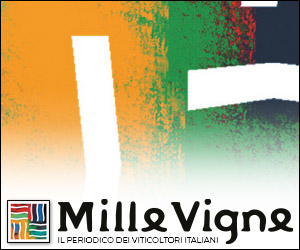Lorenzo Biscontin
One of the specific characteristics of the Italian wine industry is its high fragmentation.
In 2023, ISMEA – Institute of Services for the Agricultural Food Market recorded 140,699 vintners in Italy with an average surface area of 2.8 ha/company, 30,000 wine-making companies and a market share of the top 4 companies equal to 9.5%.
This fragmentation is often indicated as one of the sector’s weaknesses, especially when it comes to compete on international markets, considering that in almost all the other producing countries average company size is significantly larger.
Conversely, I am convinced that this fragmentation is a competitive advantage and the success of Italian wine exports over the last 15 years is proof of this.
Even in the last two years, which have been characterized by a generalized drop in consumption worldwide, Italian wine industry is limiting the damage better than competing countries (perhaps with the sole exception of New Zealand, which however exports a quantity almost 10 times lower than the 20.8 million hl exported in 2023 by Italy).
In my opinion this essentially derives from two factors:
– On the supply side, the small size allows for greater operational flexibility in terms of production, sles and finance.
– On the demand side, it allows the Italian wine system to have a very wide range of wines, capable of satisfying all the niches, big or small, that are created by the evolution of consumer tastes.
There is no doubt that the small size entails limits in the economic capacity of Italian wine companies to finance their growth and that this production heterogeneity is more complex to communicate to the markets, but the results demonstrate that the advantages outweigh the disadvantages.
A further recent sign that small can be beautiful, and good, comes from the Guide “Il Golosario”, edited by Paolo Massobrio and Marco Gatti, which awarded the Montecucco DOC Rosso Riserva Bio “Impostino” 2018 from Tenuta Impostino in Civitella Paganico (Grosseto) as Rosso dei Rossi 2024.
The Montecucco Designation of Origin recently (in 1998) recognized the specificity of the wine production tradition in the area of the Amiata hills, on the opposite side of Mount Amiata from the Montalcino area, on the slope that looks towards Grosseto and the sea.
These are 7 municipalities in which are located the 68 companies that cultivate their vineyards between 150 and 550 meters above sea level, to obtain a total of approximately 3,400 hl/year (vintage average 2021 – 2023, Valoritalia data).
A small appellation therefore, which is establishing itself in the panorama of Tuscan wines thanks to a territory characterized by notable biodiversity, in which the agricultural companies often maintain a traditional setup that also includes arable land and livestock farming in addition to the vineyard.
A mark that is also found in the wines, Sangiovese dominates with minimum percentages that vary from 90% to 60% for the red wines, with their rounded profile, not opulent, in which the presence of the peasant imprint is felt.
Borrowing the words of the poet Umberto Saba, we could say that the wines of the DOC Montecucco offer a “surly grace”.



